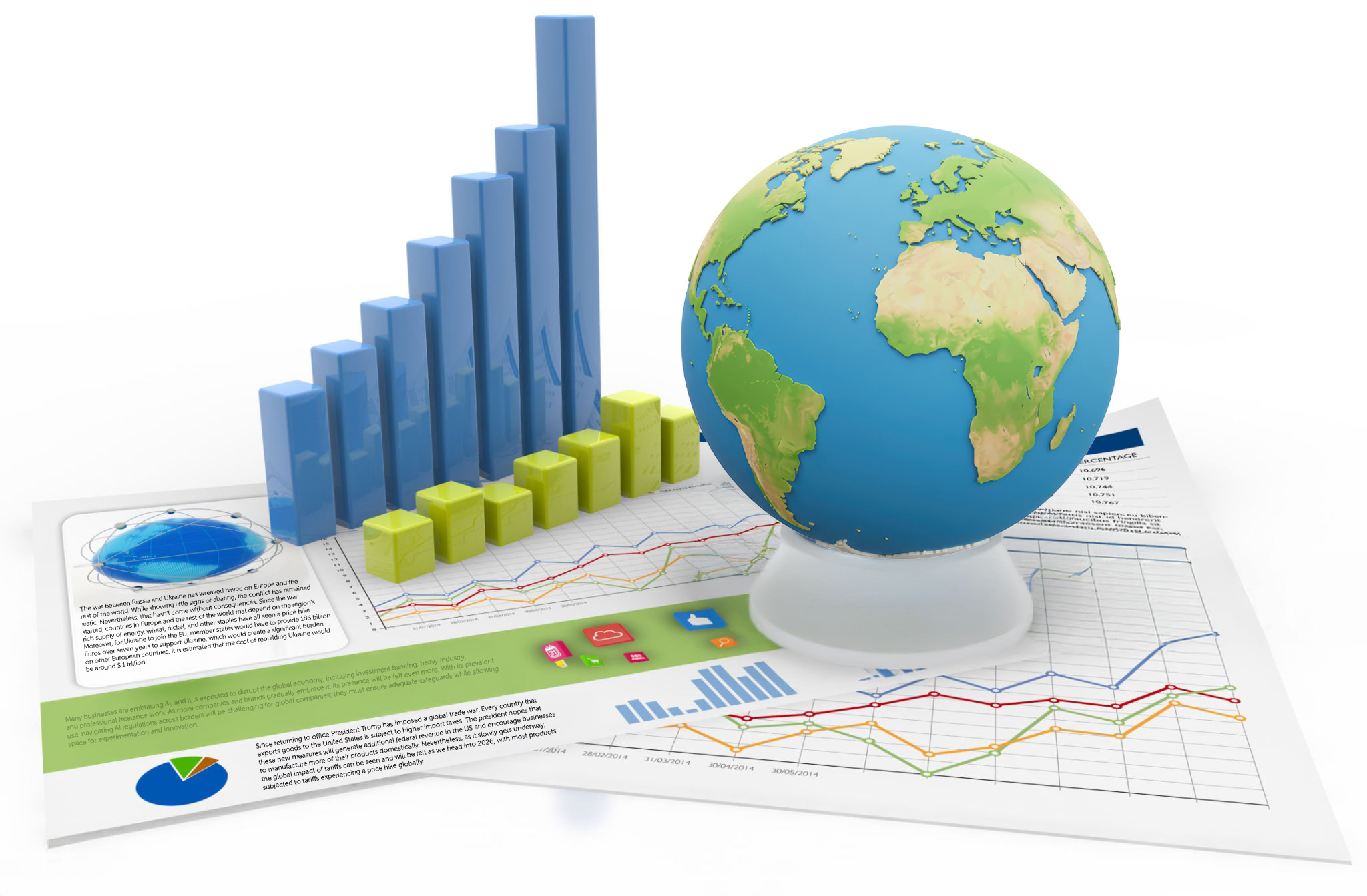Prior to the pandemic, when world leaders gathered at Davos in 2018, their mood was jubilant. After all, the managing director of the International Monetary Fund declared that the world’s economy “is in a very sweet spot.” Then a global pandemic hit, shattering everything.
As we enter 2026, many business leaders and entrepreneurs are seeking stability and a solid footing in an increasingly volatile world. The pandemic has come and gone, yet new forces in our world today are continually changing the global business landscape and economy. Here are a few of them.
Conflict in Ukraine
The war between Russia and Ukraine has wreaked havoc on Europe and the rest of the world. While showing little signs of abating, the conflict has remained static. Nevertheless, that hasn’t come without consequences. Since the war started, countries in Europe and the rest of the world that depend on the region’s rich supply of energy, wheat, nickel, and other staples have all seen a price hike. Moreover, for Ukraine to join the EU, member states would have to provide 186 billion Euros over seven years to support Ukraine, which would create a significant burden on other European countries. It is estimated that the cost of rebuilding Ukraine would be around $ 1 trillion.
Higher Interest Rates
Triggered by the Covid-19 pandemic and the war in Ukraine, inflation is gradually showing signs of cooling in the US and Europe. Nevertheless, banks still charge interest rates. High interest rates have made it significantly more challenging for entrepreneurs and business owners to secure capital investments and raise private equity. Although interest rates have seen a global spike, they still haven’t caused a debt crisis in emerging markets.
China Dynamics
China remains a polarizing figure in the world’s economy. Geopolitical tensions, shifting governmental policies, and a slow economy have all made China’s business landscape more complicated. Now more than ever, China is taking control of its economy, despite experiencing a slight decline in 2023. Its GDP in 2030 is projected to be around $ 5 trillion, greater than in 2022. If you want to do business in China, you must carefully weigh your options as the Chinese market has unique needs and regulations and faces fierce domestic competition.
Tariffs
Since returning to office President Trump has imposed a global trade war. Every country that exports goods to the United States is subject to higher import taxes. The president hopes that these new measures will generate additional federal revenue in the US and encourage businesses to manufacture more of their products domestically. Nevertheless, as it slowly gets underway, the global impact of tariffs can be seen and will be felt as we head into 2026, with most products subjected to tariffs experiencing a price hike globally.
Asia’s Economic Acceleration
Asia is well-positioned for economic growth within the next few years. Countries in the ASEAN trade group are expected to experience growth increases of 6.3 percent and 4.1 percent over the coming decade. The increase is a result of their growing domestic markets, shifting cost structures, and increased supply chain resilience.
Artificial Intelligence
Many businesses are embracing AI, and it is expected to disrupt the global economy, including investment banking, heavy industry, and professional freelance work. As more companies and brands gradually embrace it, its presence will be felt even more. With its prevalent use, navigating AI regulations across borders will be challenging for global companies; they must ensure adequate safeguards while allowing space for experimentation and innovation.
Climate Change
The effects of climate change will impact the global economy. As temperatures continue to rise, global wealth is expected to decline significantly by 2050, as crop yields fail, diseases spread, and flooding takes a toll on farms. That’s why governments are taking bold action to mitigate the effects of climate change by reducing carbon emissions. The US is investing $370 billion in clean energy and decarbonizing industries, while the EU has its own plans. These policies are influencing companies’ decisions and are likely to reshape the global supply chain.
BRICS Expansion
BRICS comprises five nations: Brazil, Russia, India, China, and South Africa. Currently, the BRCIS group has expanded to include emerging markets and countries like Saudi Arabia, Egypt, the UAE, Iran, and Ethiopia. This expansion has led to an increase in the global share of GDP; it has also increased the group’s weight in oil investments. If it continues to grow and solidify, the BRICS group can offer an interesting counterbalance to the West.
The Race for Global Talent
Many nations are now curbing migration by focusing on containing irregular migration and attracting top talent. Countries seek out entrepreneurs, engineers, and researchers to help them achieve their ambitious financial goals. In the race to attract top talent, countries around the world need new narratives and value propositions to attract tomorrow’s citizens.
David Messiha | Staff Writer



















